The value of monitoring how prospects convert into paying customers
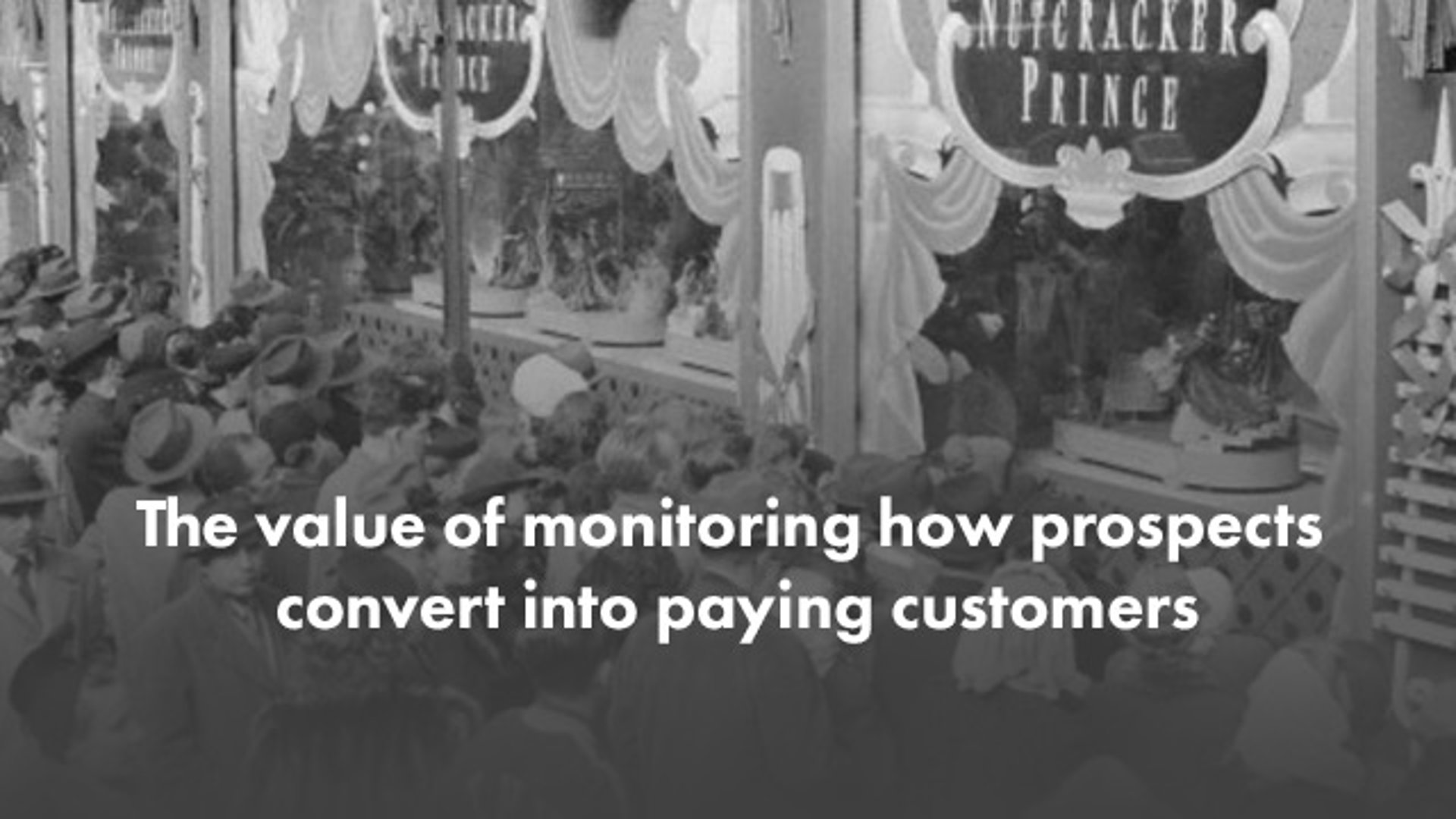
Published 2023-03-21
Summary - To succeed, a business needs to understand how they are performing. And that understanding is based on a series of metrics. It pays to take the time to calculate some of those key metrics; they will tell you a lot about how you are doing, and where you need to adjust your pitch. The first thing to look at is conversion rate: How many browsers convert into customers?
Last week, I wrote about why it’s important to figure out what numbers you need to monitor if you are to grow your company.
I also listed some of the metrics we at Klipfolio have decided to keep an eye on so that we can focus our own growth.
In the coming weeks, I want to start diving more deeply into some of those key performance indicators. I want to show why they are important, how they should be calculated and how to interpret the results.
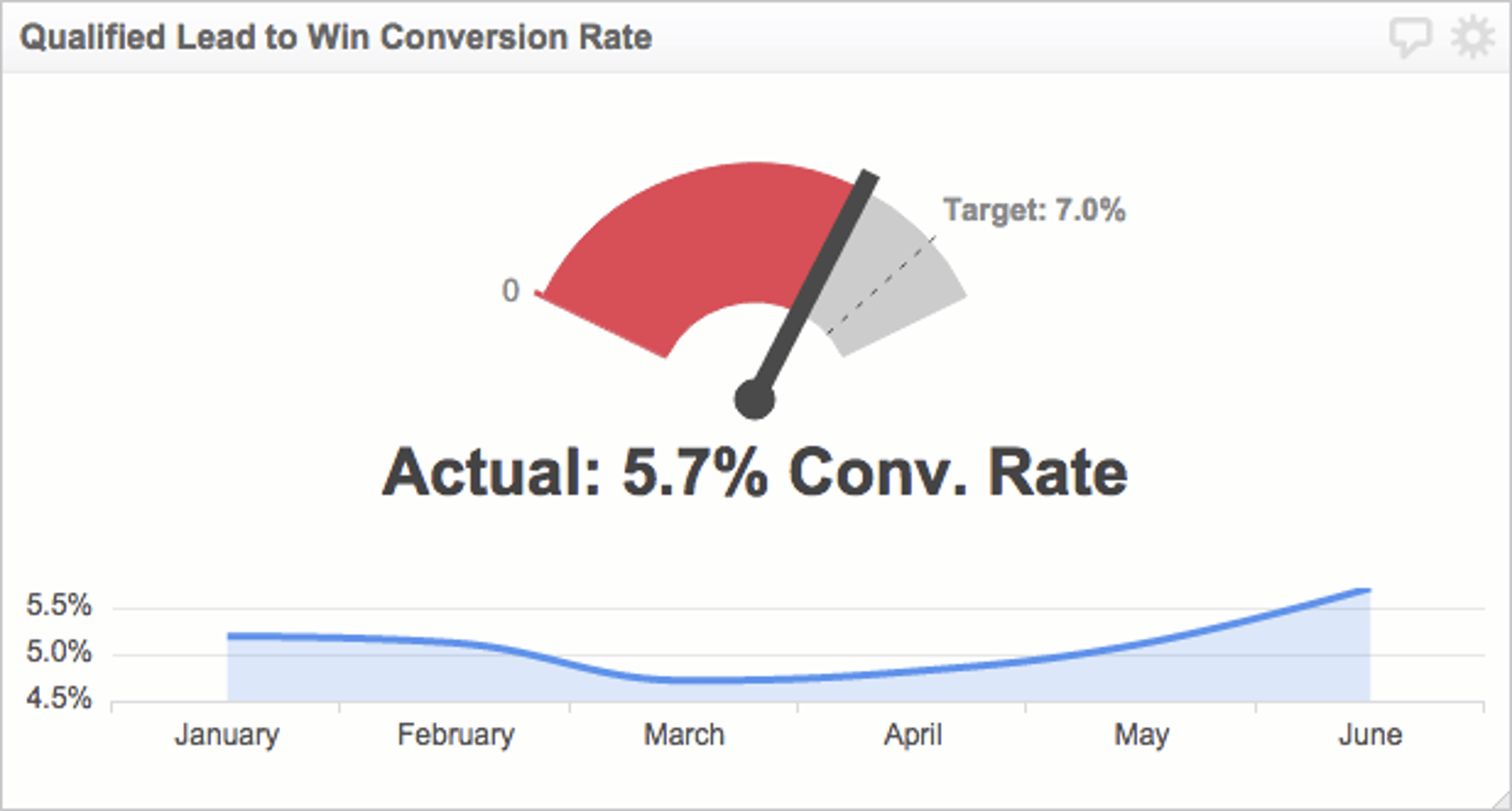
This week, I want to go into detail about what, in business jargon, is called the lead-to-win ratio.
This ratio is one of the first things a business owner needs to understand. Very simply put, it’s the ratio between the number of people who express an interest in your product and the number who actually buy it.
The conversion rate is a simple calculation, and there are only two numbers you need: the number of prospective clients, and the number of new customers.
Each of those numbers needs to be defined.
In our case, and as with many businesses, a prospect goes through a series of steps before they become a customer. For us, the process starts when a visitor to our website signs up for anything. We call them a captured lead.
Once we know a little more about them, and they meet certain buying behaviours, we move them to our list of qualified leads. From there, our sales team steps in. From here on, opportunities are created for serious buyers who then convert into new wins (new customers).
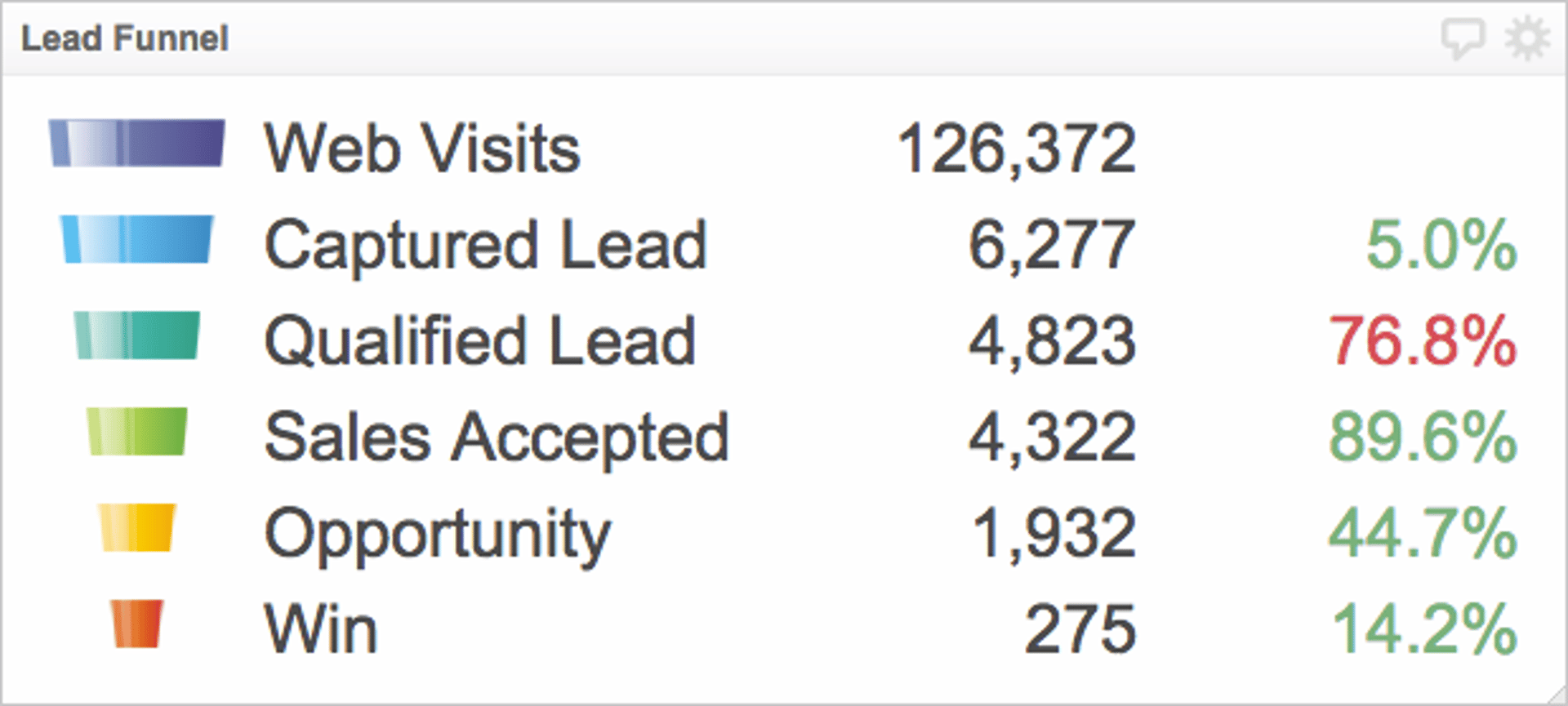
The point I want to make is that there are multiple stages to converting a prospect into a customer, and it’s as important to measure and optimize each stage as it is to measure the whole thing.
If we were a bricks-and-mortar clothing store, it would be like optimizing and measuring every stage between the window shopper and the person who walks out with a purchase. Each one of those stages can be assessed: For example, how attractive is the window display? How good is the salesperson? Each stage represents a stage in the buying cycle.
In a clothing store, the salesperson might ask a few gently probing questions: Are you looking for something particular? Is there anything you want to try on?
In our case, there are a few things we can do to measure how seriously interested a prospect is.
We will, for example, ask them to download a white paper or sign up for a newsletter. If they have expressed enough interest to give us their email address, we know they’re doing more than just window-shopping.
We also offer a trial of our application. And from our perspective, anyone who signs up for a trial is a high-quality prospect. To go back to the clothing store analogy, they are trying on the clothes.
For that reason, we don’t count people as qualified leads until they have signed up for a trial.
Then we have to define what a new client is.
That’s pretty simple. In our case, it’s someone who signs up for a paid subscription to our service - a new customer as opposed to a customer who is upgrading their service. (I’ll talk about monitoring existing customers in a future blog post)
With this information, the lead-to-win conversion rate is a simple calculation: It’s new customers divided by defined leads over a time period that is reasonable for your business. (If the sales cycle is short, then it’s month over month; if the sales cycle is longer, it’s leads last quarter over new customers this quarter.)
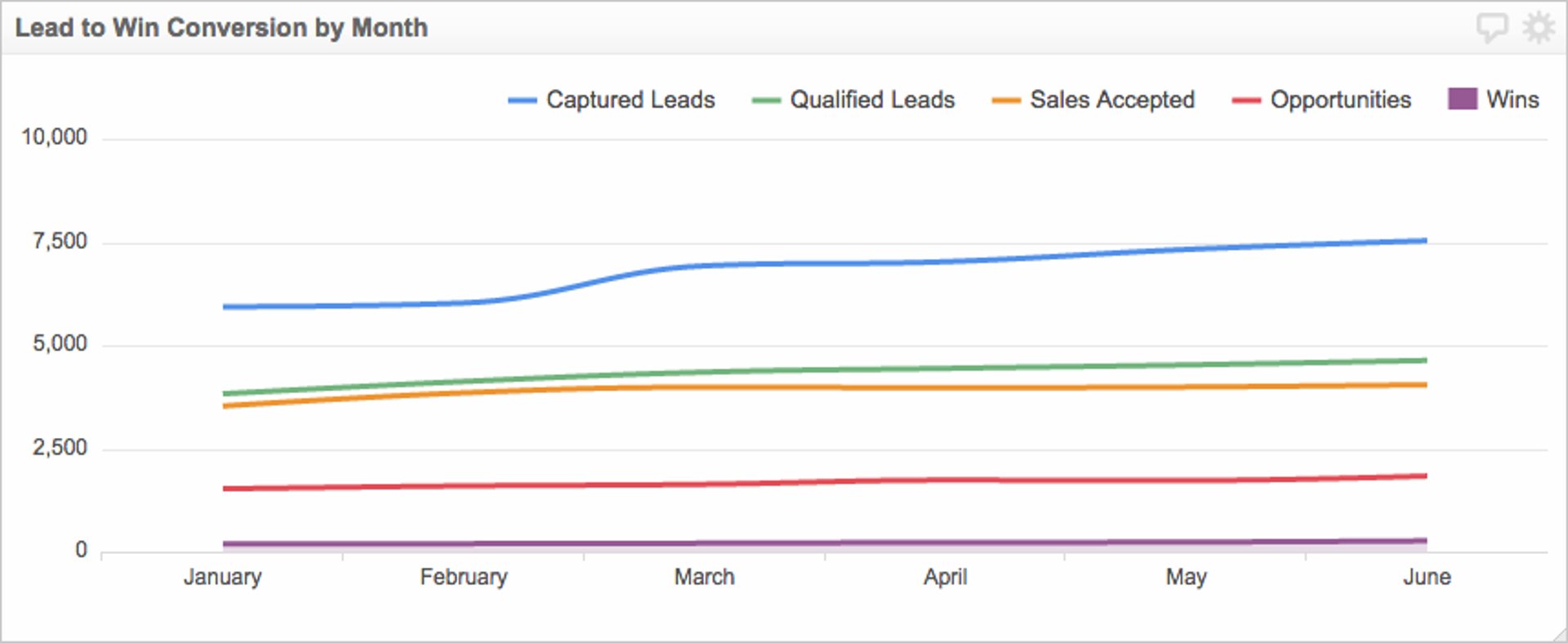
Although we monitor conversions at every stage of the lead lifecycle, the one we really watch is qualified leads to new wins. In other words, of the serious shoppers (for us, that means folks who have started a trial), how many do we win on a monthly basis?
We aim for a conversion rate of between seven and 12 per cent. (That’s a rate that we’ve decided is good for us; each firm will have its own figures.) The important thing is to monitor and improve the overall ratio over time.
Lots of things affect the conversion rate. (You will find lots of information on this in Crossing the Chasm: Marketing and Selling High-Tech Products to Mainstream Customers by Geoffrey Moore.)
For example, if your product is easy to use, if it matches prospective client needs, and if their user experience in the trial was positive, it will be easier to convert prospects to clients.
Price is also a factor.
And you have to get the right person into the trial. If the person who signs up isn’t the one who will benefit from or use the product, there’s a problem. (Your sales and marketing staff need to make sure the right person signs on.)
If your conversion rate is too low, you have a problem somewhere along the line. Maybe your price is too high, or maybe the product is not easy to use.
If your conversion rate is too high, your price may be too low.
Think like a customer. Regularly interview prospects who did not buy, as well as those who did. And test your process. We used to have some text on our trial form that said “No credit card required - free trial”. We tested with and without this text. Would you believe that by removing those words, we increased our conversion rate for that form?
There’s no magic in calculating the lead-to-win ratio, but it’s one of the most important KPIs that any business can have.
Next week: We’ll look at measuring the total number of customers retained on a monthly basis, and why this is one of the most telling metrics to get right and optimize.
Allan Wille is a Co-Founder and Chief Innovation Officer of Klipfolio. He’s also a designer, a cyclist, a father and a resolute optimist.
Related Articles

Klipfolio Partner How-To #1: Duplicating dashboards across client accounts
By Stef Reid — November 27th, 2025
The Starter Guide to Dashboard Design
By Emily Hayward — September 24th, 2025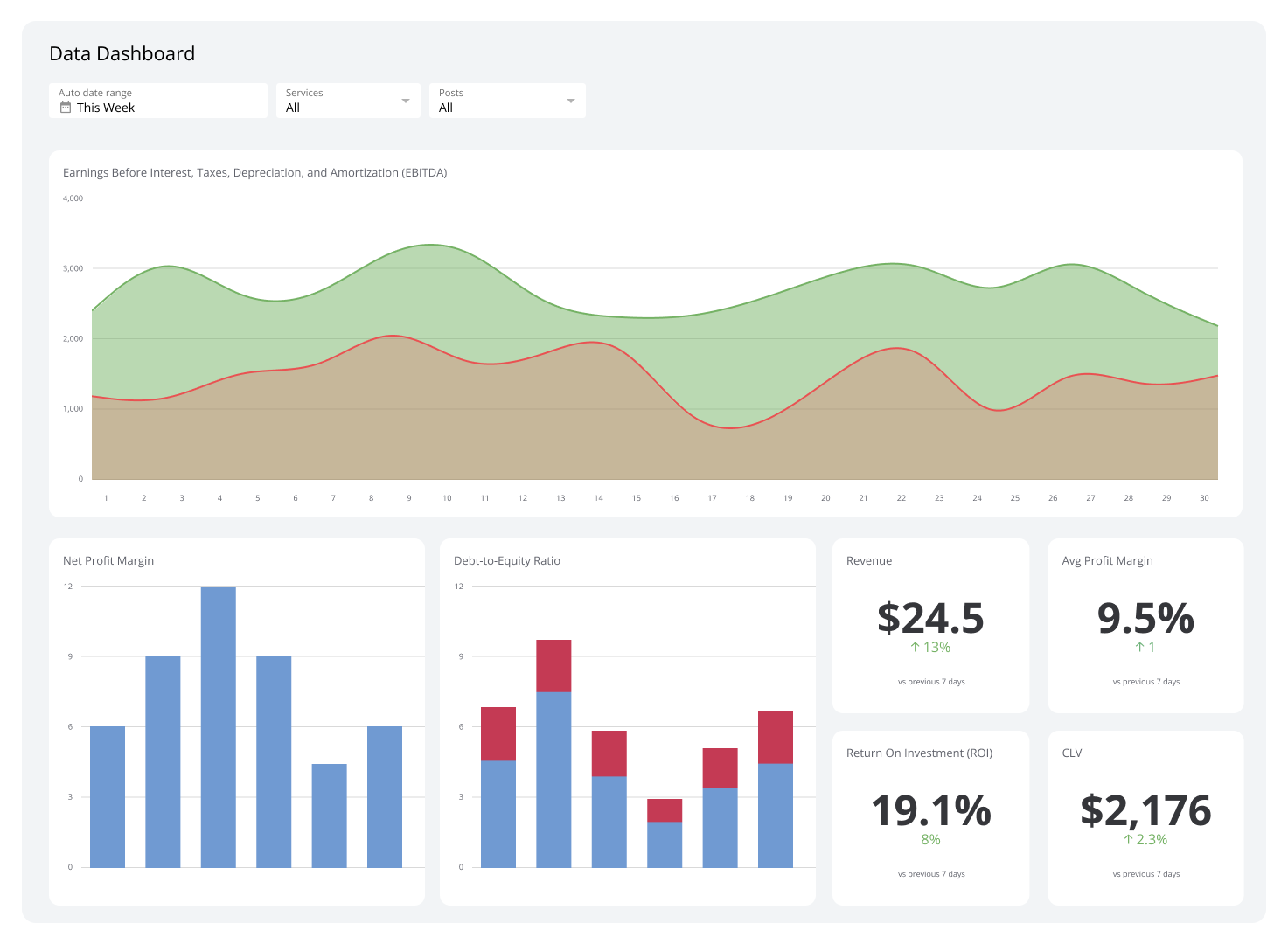
What is a data dashboard?
By Emily Hayward — August 18th, 2025

